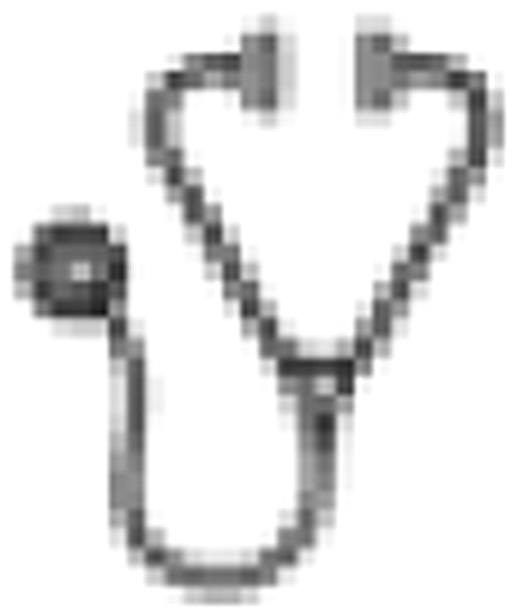Abstract
Type 1 Gaucher disease (GD) is an inherited storage disease characterized by acid-β-glucosidase deficiency and the accumulation of glucosylceramide in the mononuclear phagocyte system. Hematologists are commonly the specialists to whom affected individuals present; findings may include anemia, thrombocytopenia, splenomegaly, hepatomegaly, and skeletal and bone marrow pathology. HGT-GCB-058 was a multicenter treatment protocol initiated at the request of the US Food and Drug Administration (FDA) in 2009 (ClinicalTrials.gov identifier NCT00954460). It provided velaglucerase alfa, then an investigational drug, to patients with type 1 GD who would otherwise have experienced a disruption or delay in receiving enzyme replacement therapy (ERT) due to a global supply shortage of imiglucerase at that time.
We report safety results in patients who received up to 12 months of velaglucerase alfa in protocol HGT-GCB-058, and the transition from administration at the clinical site to home infusions.
To enroll, patients had to be aged >2 years, with a documented diagnosis of type 1 GD and no history of an anaphylactic or anaphylactoid reaction to ERT. Patients who were treatment-naïve received 60 U/kg (body weight) of velaglucerase alfa as an intravenous infusion every other week (EOW). Patients who were previously treated with imiglucerase (switch patients) received the same EOW dose of velaglucerase alfa as their prior imiglucerase treatment. Each patient could continue in the protocol until commercial therapy was available to him or her. Adverse events (AEs) were monitored throughout the patient's participation in the protocol. Switch patients were eligible for home therapy if they received their first 3 infusions, at the clinical site, in the absence of an infusion-related AE or treatment-related, serious AE (SAE).
Across 23 centers, 211 patients were enrolled. The median age was 54 years (range 6–89 years); 8 patients were aged <18 years; 48% were male; 34% were splenectomized. There were 205 switch patients (the median prior imiglucerase exposure was 145 months [range 1–231 months]) and 6 treatment-naïve patients. All 211 patients received ≥1 infusion of velaglucerase alfa. By the end of 12 months, 203 patients had left the protocol; most patients transitioned to commercial velaglucerase alfa, which was approved by the FDA in 2010. The median duration of velaglucerase alfa treatment in the protocol was 182 days (range 1–365 days) for switch patients and 106 days (range 27–232 days) for treatment-naïve patients. Over 12 months, most AEs were mild or moderate in severity. Twenty severe AEs were reported in 11 patients, of which 5 – pain in extremity and fatigue in 1 patient, fatigue in 1 patient, and 2 instances of generalized pain in 1 patient – were considered treatment-related Table). Ten SAEs were reported in 7 patients, of which 1 (migraine) was considered treatment-related. The AEs leading to protocol discontinuation were: nausea, increased blood pressure (both treatment-related), and hip fracture (not treatment-related). The most common AEs were nasopharyngitis (n=15), headache (n=15), and nausea (n=12). After the first 3 infusions, 187 of the 205 switch patients were eligible for home therapy based on safety criteria. During the protocol, 54 patients received ≥1 home infusion. Home infusions were administered by qualified and trained medical personnel under the direction of the investigator. Patients' and investigators' preferences for home therapy were not captured in the protocol.
Number of patients (n) experiencing AEs in 12 months of HGT-GCB-058
| Experience . | n (% of total) . | |
|---|---|---|
| Treatment-naïve (total N = 6) . | Switch (total N = 205) . | |
| ≥1 AE | 3 (50) | 89 (43) |
| ≥1 treatment-related AE | 1 (17) | 35 (17) |
| ≥1 infusion-related AE | 1 (17) | 27 (13) |
| ≥1 severe AE | 0 | 11 (5) |
| Possibly or probably treatment-related | 0 | 3 (1) |
| ≥1 SAE | 0 | 7 (3) |
| Possibly or probably treatment-related | 0 | 1 (0.5) |
| ≥1 life-threatening SAE | 0 | 0 |
| Discontinued protocol due to an AE | 0 | 3 (1) |
| Experience . | n (% of total) . | |
|---|---|---|
| Treatment-naïve (total N = 6) . | Switch (total N = 205) . | |
| ≥1 AE | 3 (50) | 89 (43) |
| ≥1 treatment-related AE | 1 (17) | 35 (17) |
| ≥1 infusion-related AE | 1 (17) | 27 (13) |
| ≥1 severe AE | 0 | 11 (5) |
| Possibly or probably treatment-related | 0 | 3 (1) |
| ≥1 SAE | 0 | 7 (3) |
| Possibly or probably treatment-related | 0 | 1 (0.5) |
| ≥1 life-threatening SAE | 0 | 0 |
| Discontinued protocol due to an AE | 0 | 3 (1) |
Velaglucerase alfa was generally well-tolerated in a large, clinically heterogeneous group of patients with type 1 GD. Of 205 patients in treatment protocol HGT-GCB-058 who switched from imiglucerase, 91% met the safety criteria for early transition to home infusions and 26% received ≥1 home infusion, which supports home therapy as a treatment option depending on the patient's response and the recommendation of the treating physician.
Pastores:Actelion: Research Funding; Amicus: Research Funding; Biomarin: Research Funding; Genzyme Corp: Research Funding; Protalix: Research Funding; Shire HGT: Research Funding. Rosenbloom:Genzyme Corporation: Educational Grant; Shire Pharmaceuticals: Research Funding, Speakers Bureau; Genzyme Corp: Research Funding, Speakers Bureau. Weinreb:Shire HGT: Honoraria, Membership on an entity's Board of Directors or advisory committees, Research Funding, Speakers Bureau; Genzyme: Honoraria, Membership on an entity's Board of Directors or advisory committees, Research Funding, Speakers Bureau; Amicus: Research Funding; Actelion: Speakers Bureau. Goker-Alpan:Shire HGT: Consultancy, Research Funding; Genzyme Corp: Research Funding, Speakers Bureau; Amicus: Research Funding; Pfizer-Protalix Biotherapeutics: Consultancy, Research Funding. Lipson:Kaiser-Permanente: Employment. Ibrahim:Shire HGT: Research Funding. Cohn:Shire HGT: Employment. Zahrieh:Shire HGT: Employment. Mistry:Shire: Research Funding.

This icon denotes a clinically relevant abstract
Author notes
Asterisk with author names denotes non-ASH members.

This feature is available to Subscribers Only
Sign In or Create an Account Close Modal